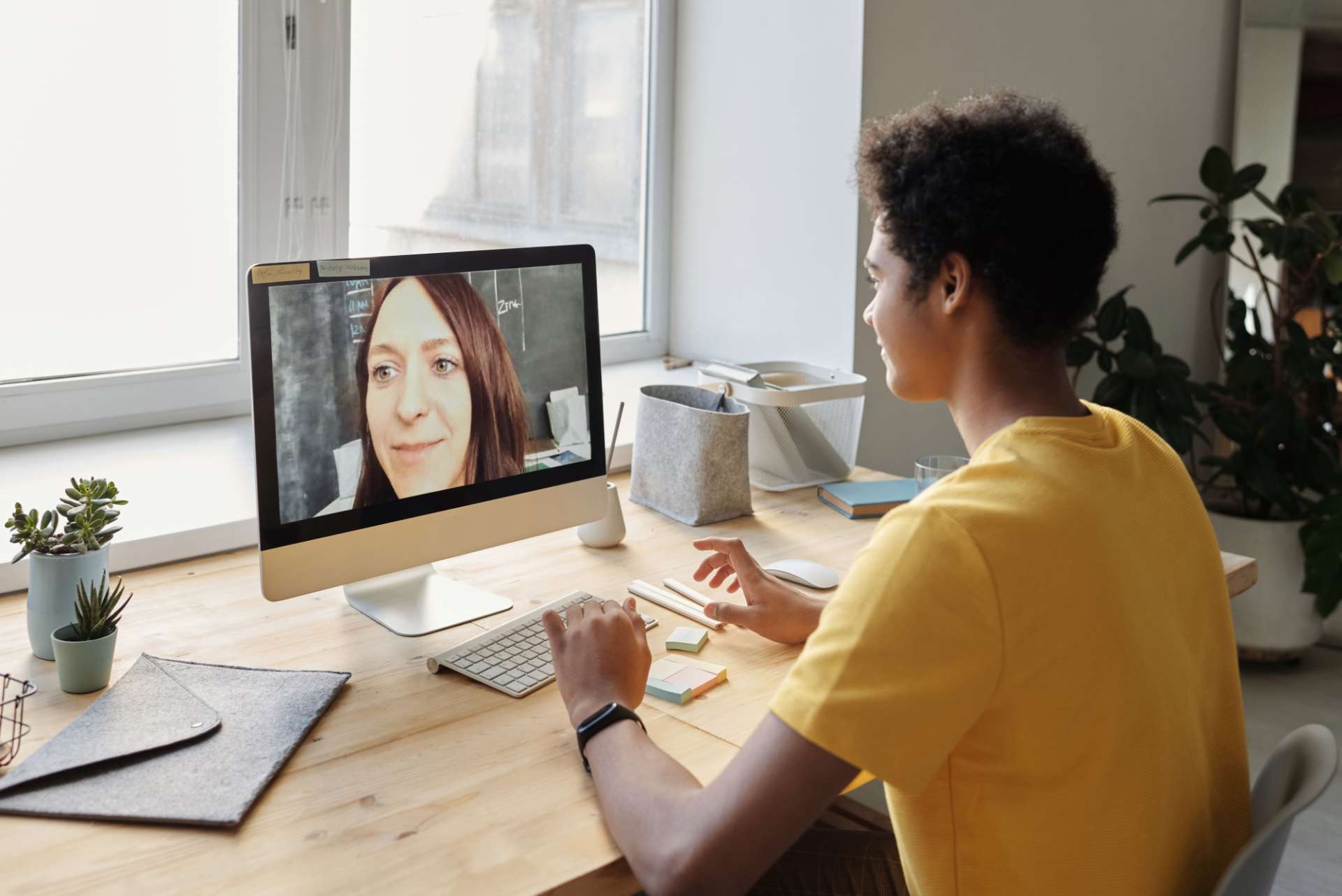Since we discovered the world of online education, we have heard plenty of different terms in primary, secondary and higher education. We see terms like blended learning, hybrid learning, flipped classrooms and virtual classrooms. And with them, the words distance learning or education from a distance. Some schools had already started online teaching here and there. But in the meantime, digital developments in education have accelerated. Even at schools where digital education was not the way to go, Zoom and Microsoft Teams are indispensable now. Traditional classrooms with old-fashioned chalkboards have been replaced by virtual classrooms. And teachers have turned out to be true Zoom and Teams experts 😉.
Hybrid learning
Digital education is a challenge. Is education prepared for all these digital developments? And don't forget the differences between blended learning, hybrid learning and flipped classrooms. We hear these terms more and more, but they don't mean the same thing in every school. And that can cause some confusion.
The terms hybrid learning and blended learning are often used interchangeably. And that's not very helpful, of course. To begin with, hybrid, what is that exactly? Hybrid means nothing more than a cross, a combination or a mixture. Doesn't sound very complicated, does it? Hybrid education is, therefore, a combination or hybrid of offline and online. The lessons are classroom-based, with some of the students being present in the classroom. The other students follow the given class at home. They all follow the lesson at the same time, regardless of the location. Whether in the classroom, at home on the sofa or in the hammock in the garden. The latter is perhaps not very practical. But you only have to give the lesson once.
What is blended learning? It means mixed learning. That doesn't sound very complicated either. But what is the difference with hybrid learning? Whereas hybrid learning focuses on how you teach, online and offline, blended learning is more about the content. Different forms of learning methods are combined, such as classroom lessons combined with e-learnings. These e-learnings can be viewed before the classes start. During the classroom lesson, there is room for deepening. But it is also possible to use these e-learnings during your classroom lesson. Not in the mood for e-learnings? You can also think of YouTube videos, white papers or coaching sessions. The possibilities are endless.
But back to hybrid learning for a moment. According to some, hybrid learning is the route to the future of education, in which technology will form the basis. Microsoft also had something to say about this: “We believe that the sudden global shift to distance learning, though incredibly difficult, has caused school leaders and educators to reflect deeply on what best helps their students and reflect on which innovations they should pick up.”
Technology, on the other hand, should be supportive, not leading. Because what works for one school may not work for another.
Advantages of hybrid learning
You cannot always serve your students at a distance as good as when they are in the classroom. Various studies have shown that teachers and students have experienced hybrid learning very differently. Some teachers find hybrid learning a good addition but have doubts about the rate of activity and engagement in the online lesson. Students, on the other hand, would much rather continue doing independent tasks at home. Despite the challenge, hybrid education offers advantages.
- Whether they are at school and in the classroom (physical) or from home behind the laptop (remote), you teach your students simultaneously.
- Your students who work at home are present in the classroom via the camera. It almost feels like your students are physically present.
- As a teacher, you only have to give the lesson once, just like you are used to. The lessons do not have to be cancelled. The timetable remains as it is.
Some teachers are not yet convinced. We give you 6 advantages of digital education!
Hybrid learning with a touchscreen
What do you need for a hybrid learning environment? To make hybrid education successful, the quality of both images and sound is crucial. A touchscreen in the classroom is also essential as they make lessons more fun, playful and interactive. No more boring lessons. Sounds fantastic, right?
Meet the CTOUCH Riva, for example, a super user-friendly touchscreen that brings the power of touch into every learning environment. Use Kahoot! and create and share quizzes and games on the touchscreen. Or present your lessons using PowerPoint, which also works flawlessly on a touchscreen. Your classes are guaranteed to come to life!
But then what? Hybrid education combined with a touchscreen? How does it work? It is very simple. First of all, connect a video camera to the touchscreen. Via the video camera, the students at home can also see your happy face. Next, your students can very easily join your Teams meeting. From that moment on, all your students listen to the lesson together. Or they can work on an assignment together. And because everyone can see each other during the lessons and can work together, you ensure interaction.
The future of education
The changes within education are rapid. As a teacher, you naturally want to be prepared for EVERYTHING. You can read all about it in our free whitepaper. Are you ready for the education of the future?
